4 Smart Ways to Amend Clay Soil Without Tilling
Welcome! This article contains affiliate links, meaning I get a commission if you decide to make a purchase through my links, at no extra cost to you.
Let’s brainstorm four genius ways to amend clay soil without tilling. Because as you know, clay soil is generally not desirable for gardening. Sure, some plants can sustain life in compact clay, but most vegetables, herbs, and even ornamentals struggle to survive in this soil type.
So, what can you do if your property has heavy clay soil, and you want to step up your gardening efforts to supply fresh, organic, nutritious food for your family?
Is it possible to amend clay soil so that it propagates plants better? And if so, can you do it without using a rototiller?
Yes, it’s possible!
Let’s discuss some of the best ways to do so.
Shall we?
What’s Inside:
How to Amend Clay Soil Without Tilling
There are various ways you can enhance the clay soil structure so that plants find it livable, and we’re going to take a close look at 4 of the best ways to do it, including the following.
- Top-Dressing
- Core Aeration
- Deep Soil Integration
- Dig & Drop Composting
You should be aware that none of these clay amendment methods can transform clay into the rich, organic soil we all dream of. But each of these techniques can add to the quality of clay dirt. Combine some or all of them and your clay soil will be significantly improved with the inclusion of organic matter.
Before we learn about no-tiller clay amendment, let’s quickly dig in to uncover why clay soil is unsuitable for most gardening purposes. It has a lot to do with pH.
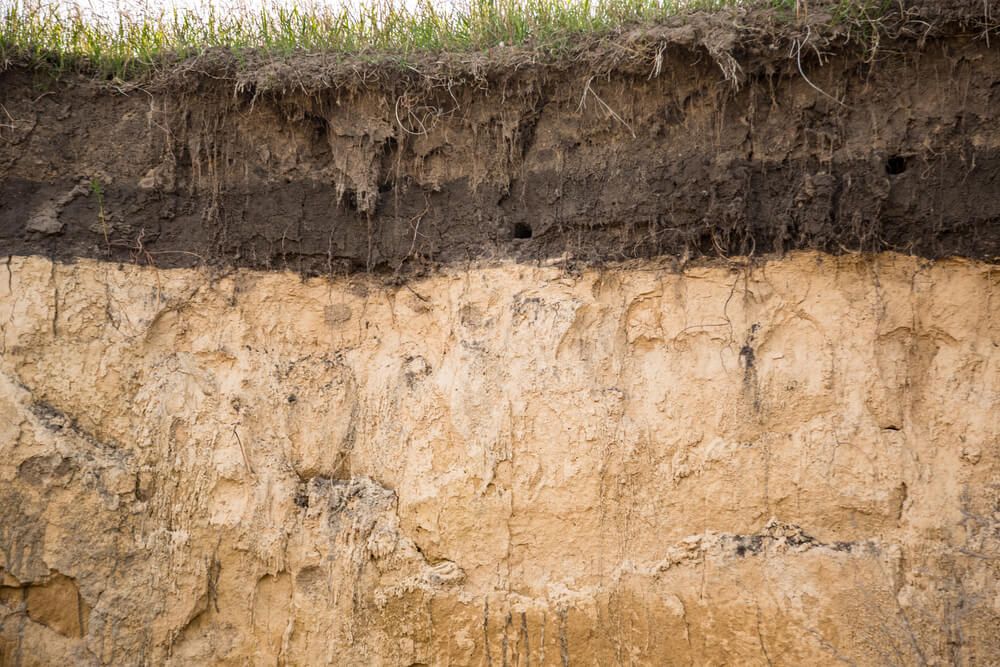
Is Clay Soil Acidic or Alkaline?
Acidity and alkalinity get measured on the potential for hydrogen (pH) scale, which ranges from 1 to 14. pH values less than seven are acidic. Exactly seven is neutral. And above seven is alkaline.
Most plants grow best in soils with pH ratings between 5 to 7, meaning they like slightly acidic soil. This acidity level in the garden soil helps the plants absorb more critical nutrients, like phosphorus, magnesium, copper, and iron, to name just a few.
It so happens that most clay soil has pH levels between 8 to 10 – meaning it’s alkaline.
You can use a soil test kit to determine the pH of your soil and whether it needs treatment to bring its level up or down – all according to the crop you want to grow.
And even if the acidity level of clay soil is proper to accommodate plant growth, clay has other problems too. The clay particles are insanely small, which makes clay densely compact.
Condensed clay is hard to penetrate, especially for tender, new root shoots that a plant attempts to develop. Of course, plant roots need to spread as far and wide as possible to maximize the uptake of essential nutrients they achieve. Clay isn’t good for that.
Further, roots, worms, and other beneficial soil-based creatures have a trickier time penetrating clay and calling it home. These creatures are tremendously helpful for any naturally thriving garden bed or other plant growth area.
And finally, clay has few air pockets and is water-resistant, which is not ideal for plants and their roots, which are nearly all water!
Clay dirt is prone to waterlogging during wintertime and dehydrating to the point of cracking in the summer months. It’s always excess water or no water at all with clay!
Overall, unamended clay isn’t a gardener’s friend.
However, some wild grasses, flowers, and edibles can grow well in heavy soils like clay. Let’s quickly look at some.
Do you have clumpy, dry, clay-like soil? Then check out Gardening In Clary Soil - A Storey's Country Wisdom Bulletin by Sara Pitzer. The book covers vital clay soil topics such as organic and inorganic additives, how to manage stubbornly-hard soil, plants that don't mind clay, and watering clay soil. We should note that the book is relatively short, at only 31 pages. However, it's an excellent resource for anyone struggling with hard clay dirt in their garden. No doubt!
Plants that Can Thrive In Alkaline Soil Like Clay
Some types of plants tend to grow well in dense clay earth, including:
- Apple trees
- Pear trees
- Azaleas
- Black-eyed Susan
- Canadian Wild Rye
- Daylily
- Goldenrod
- Hydrangeas
Others include Lavender, Pecan Trees, Peony, Rose, Sunflower, Sweet Flag, and Turfgrass.
Unfortunately, you’ll likely have difficulty finding food crops that grow well in clay if you’re not fond of apples, pecans, and sunflower seeds and don’t enjoy eating flowers and grass.
Yes, gardening in clay soil can be brutal.
Hence, the need to amend clay. And our purpose here today.
So, let’s get into it!
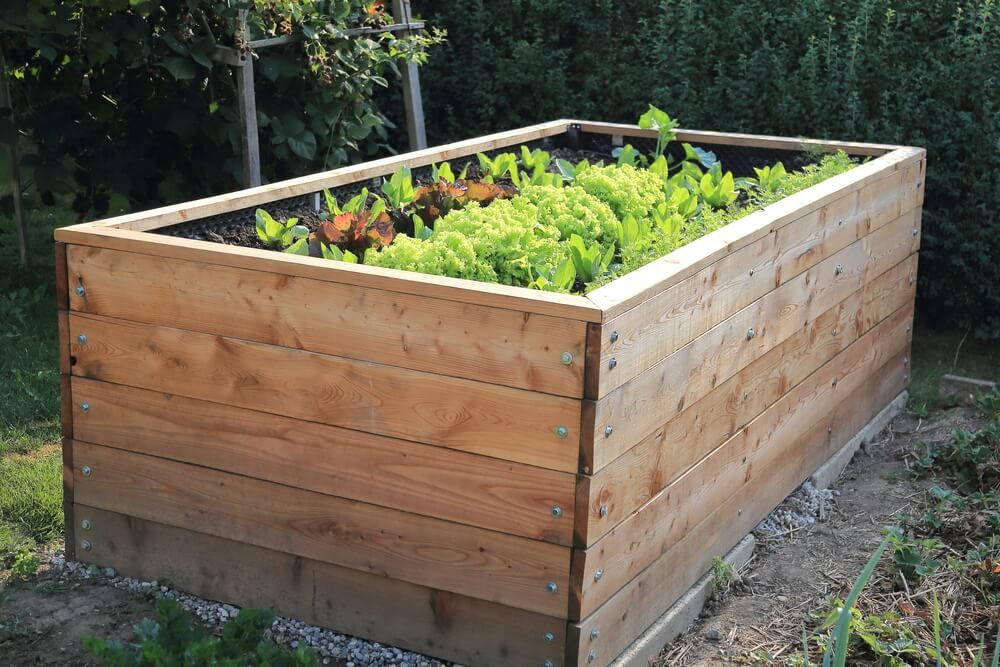
4 Popular Methods to Amend Clay Soil Without Tilling
Before we get into these effective methods for improving the quality of clay without using a rototiller, it’s worth noting that amending clay can be a long process. And even with solid planning and diligent effort, clay soil is never the same as naturally organic, rich soil.
My point?
Consider raised beds.
It’s economical and relatively easy to construct raised beds that can sit atop your clay soil and grow hearty, delicious food crops for your family and emergency food storage rations.
I have several raised beds around my property in Texas, where clay soil is quite common. I also use garden beds with organic fertilizers for certain crops, like my herb garden, on my property in Kentucky.
Raised bed gardening is thrifty, easy, and effective, and many times, it requires less expenditure, time, effort, and frustration than amending stiff, unforgiving, uncooperative clay-based garden soil.
OK, here we go, for real this time!
Top-Dressing

Top-dressing won’t magically transform your clay into lush, aerated soil, but it can help to add some nutritional content to the clay.
The process is simple. You just spread organic matter over the surface of the clay. You can leave it there to decompose naturally. But it won’t penetrate the clay on its own.
Of course, this is a case when a rototiller comes in handy. Rototillers (or manual tillers) can grind all that good organic matter under the surface, but we’re here to avoid that.
Still, simply coating the surface with quality organic material – like vegetable scraps, peat moss, shredded leaves, grass, manure, and other composting materials – can help to improve soil quality.
Now, let’s look at how to make top-dressing more efficient and still not use a tiller.
Core (Plug) & Spike Aeration & Top-Dressing
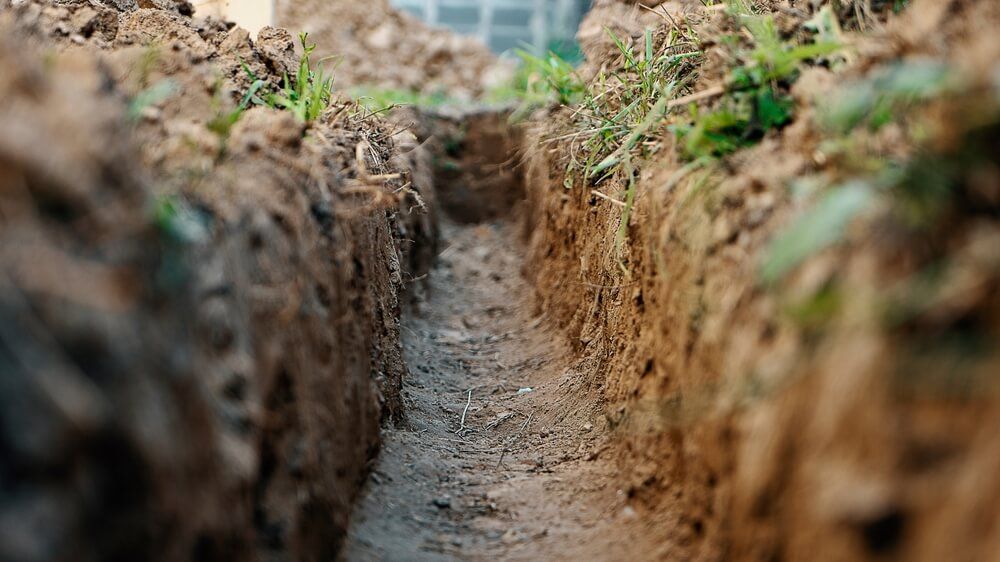
You can use a plugging tool to remove cylindrical plugs of garden soil. Or a garden spike to poke holes into it, and then rake your top-dressing material into those holes.
Note that using a spike does make room to scrape some organic material, but it also compresses the already compact clay even more. So, I recommend using a plugging tool, but not a garden spike in clay.
Plugging is an excellent way to mesh the organic material into the clay without a tiller. It allows the material to penetrate the clay instead of just sitting on the surface.
Physically remove some of the clay’s volume with a plugging tool instead of just squishing it down upon itself with a spike. That way, you improve the clay-to-organic material ratio.
Improving the clay-to-organic material ratio also encourages worms and other beneficial creatures to inhabit areas they never browsed before. And you can always import some worms and other bugs from elsewhere.
Over time, this contributes to the overall soil microbiome diversity, including healthy bacteria, improving its quality and nutritional value, and helping you to grow beautiful plants.
Delivering the organic material into the clay this way initiates numerous biological and chemical processes necessary to create a thriving environment for plant growth with deep roots.
Be aware, though, that it is not the same as thoroughly turning the organic material into the entire clay surface as would result from using a rototiller. It is, however, much better than top-dressing with a couple of inches of compost alone.
Deep Clay Soil Integration

Deep clay soil integration is my favorite amendment for clay soil without a rototiller. You can rent an auger, like a post-hole digger, from a tool rental store for about 25 bucks daily. You can probably get it for less if you borrow (rent) it for only 8 hours or a half-day.
In a short time, you can drill dozens of strategically placed holes into your clay soil yard. Auger bits are about 6 inches in diameter and drill through 36 inches deep of soil or more. These holes are like core aeration, except taken to an extreme level!
These three-foot deep, 6-inch-wide holes allow you to alter the soil composition in a given area. You’re physically removing more clay than you would be with a coring tool, which means better soil improvement.
When you rake your organic material down into these holes, it strongly upregulates the chemical and biological processes necessary to enrich the soil microbiome. This soil amendment method helps increase the abundance of soil nutrients and other beneficial soil elements.
Plus, it significantly enhances the yard’s capacity for drainage. Sometimes, if your auger bit is long enough, you’ll penetrate entirely through the layer of clay into a more desirable layer of soil beneath. This technique also creates traveling paths for water, plant roots, and creatures that enrich your growing area.
Try this method of amending clay soil without tilling. You might be impressed with the healthy soil texture results. I can’t think of a better clay amendment method, and it’s also very inexpensive! It’s excellent for other types of heavy or compacted soil too.
Dig & Drop Clay Aeration Composting
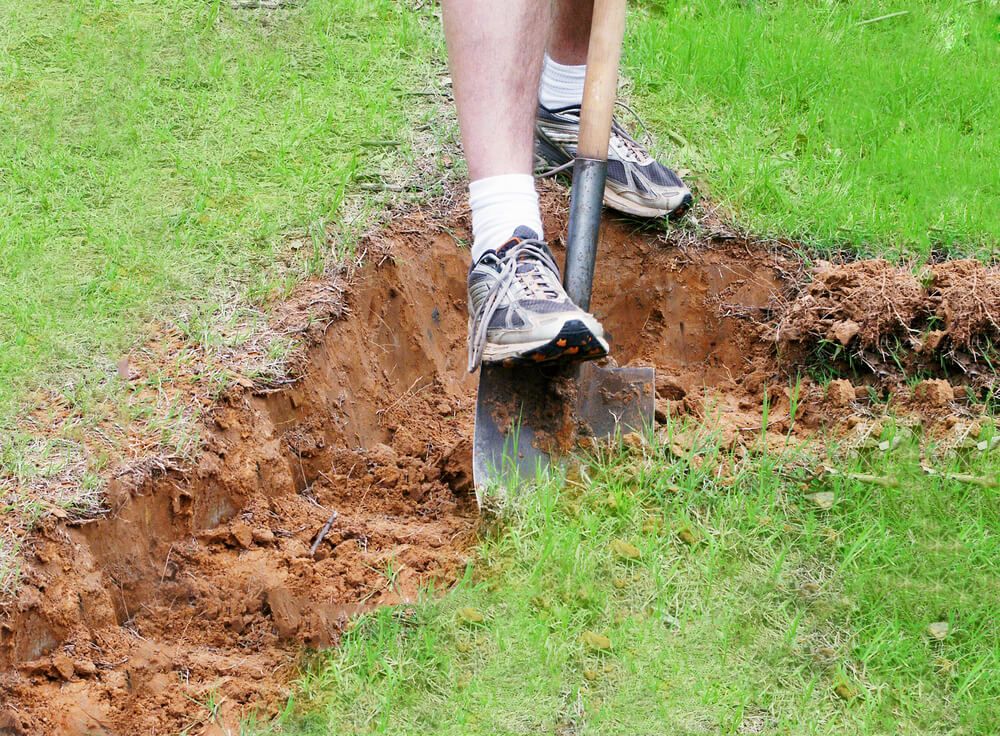
Here’s another effective way to enhance clay soil’s quality and nutritional content. Grab a
You can dig deep, possibly penetrating through the clay into better soil. It’s all about how much elbow grease you want to dedicate to the process.
Again, after you dig the holes, you’ll want to fill them in with rich, organic material that can enhance the biological and chemical composition of the soil in that area. You can do this repeatedly throughout the years, continuously increasing your organic material-to-clay ratio.
Helpful Tip: It’s much easier to dig holes with a
Read More!
- Does Potting Soil Go Bad? 3 Ways to Tell for Sure!
- How to Improve Garden Soil Naturally – Over Winter and Year-Round!
- 13 Best Potting Soil for Herbs and How to Start Growing Now!
- Best Grass Seed for Clay Soil!
Closing Thoughts About Amending Clay Soil Without Tilling
If you don’t own a rototiller, you can rent one. And I can assure you that rototillers got invented for good reasons. They can work through rocky, hard clay, and other soil types far more straightforwardly than you can with a
Or, maybe you know a local farmer that you could offer to hire the work out to. A tractor with the disc set up on the back of it can make easy work out of mixing a top dressing into the surface of your clay yard.
Ask around and explore your options. You might strike up a smooth deal that saves you a lot of work and yields far better results.
However, if you lack a tiller, any natural method reviewed above will positively affect your soil composition, water movement, and subsequent ability to grow a greater variety of healthy plants – including a healthy lawn. Your soil is alive, and you can enhance its health over the years.
Experiment with different techniques of natural soil amendment. Produce your homemade compost. Make up your techniques. It’s just clay. And it’s your clay. You can try any method to amend your clay soil quality without a tiller. Let no one tell you otherwise!
Thank you for reading along today, and I wish you the best of luck in improving the quality of your clay soil lawn so that you can grow nutritious foods and beautiful ornamentals.
Everyone likes healthy soil structure and healthy plant growth!
Amend Clay Soil Without Tilling Resources, Guides, and Works Cited


![17 Gorgeous Winter Plants for Outdoor Pots [Cold-Hardy Flowers!]](https://69be7209.flyingcdn.com/wp-content/uploads/2022/12/purple-heather-growing-in-pots-during-winter-768x513.jpg)
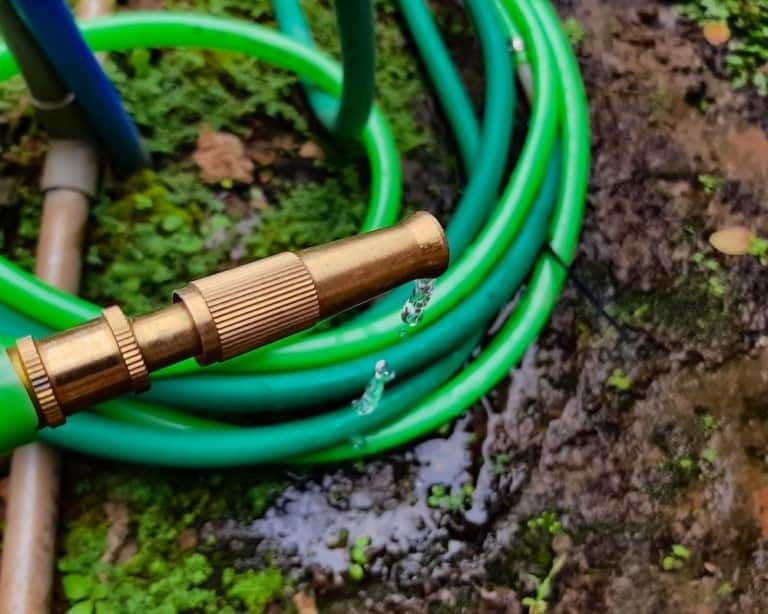
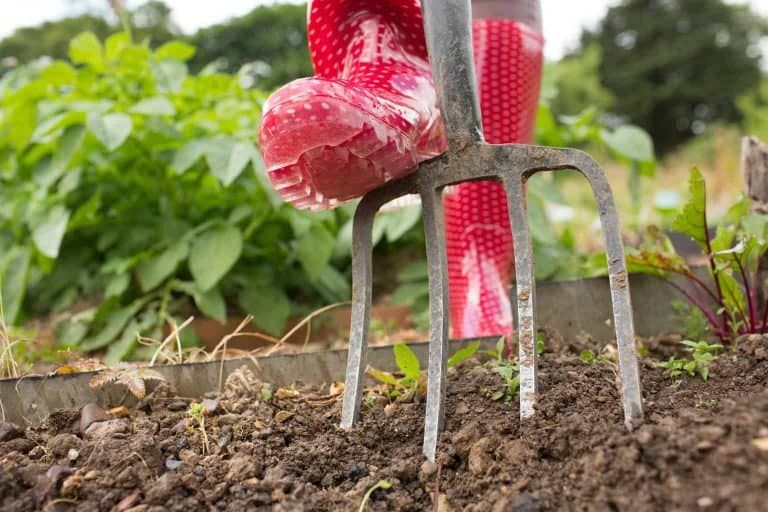
![How to Gather Your Own Red Clover [and Dry It for Infusions, Tea & More!]](https://69be7209.flyingcdn.com/wp-content/uploads/2021/05/beautiful-fresh-pink-flowers-of-clover-in-summer-colorful-meadow-768x512.jpg)
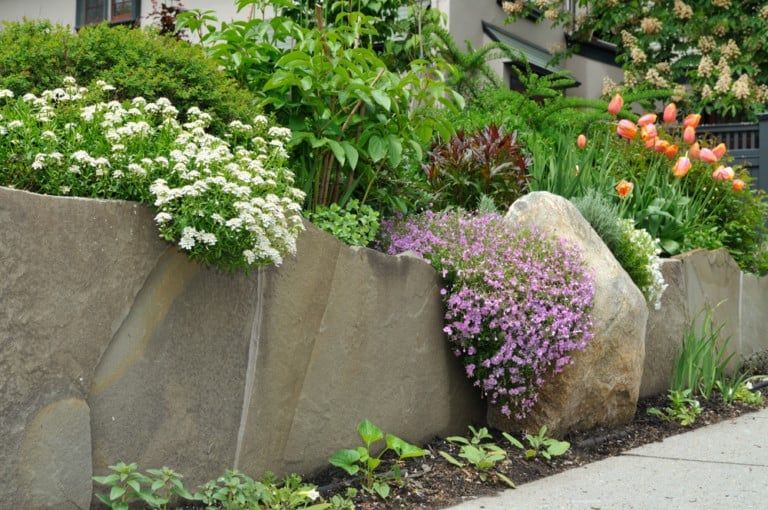
![19 Amazing [and Free!] DIY Greenhouse Plans and Ideas](https://69be7209.flyingcdn.com/wp-content/uploads/2021/06/glass-greenhouse-768x513.jpg)